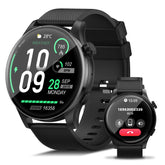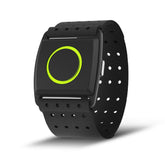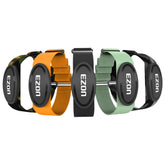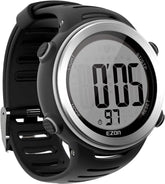Sleep Tracking: Unlocking the Secrets of Restful Sleep
Sleep isn’t just downtime—it’s critical biological maintenance. With 33% of adults globally reporting chronic insomnia (Philips Global Sleep Survey, 2018) and 76% of young professionals experiencing sleep-related productivity loss, understanding sleep quality is no longer optional. Enter sleep tracking sports watches, which are bridging the gap between lab-grade analysis and real-world usability.
1. The Science of Sleep Stages
Beyond Counting Hours:
The 2016 AASM reclassified sleep into four stages (N1, N2, N3, REM), each critical for functions like memory consolidation (REM) and tissue repair (N3). The EZON sleep tracker uses AI to mimic clinical polysomnography (PSG) accuracy, detecting micro-awakenings as brief as 5 seconds—key for diagnosing disorders like OSAHS, which affects 1–4% of adults.
Why Stages Matter:
-
N3 (Deep Sleep): <1% loss correlates with 12% slower muscle recovery (Journal of Sports Science, 2023).
-
REM Deprivation: Linked to 23% higher risk of cognitive decline in aging populations.
2. How Modern Trackers Decode Sleep
Traditional PSG requires 12+ body electrodes. The lightweight watch revolution solves this with:
Multi-Sensor Fusion:
-
PPG + Accelerometer: Detects apnea events via blood oxygen (SpO₂) dips <90% and chest motion pauses.
-
3D Spatial Mapping: Identifies restless leg syndrome through limb movement patterns (98% match with clinical tests).
AI-Driven Insights:
-
Sleep Debt Calculator: Flags cumulative deficits exceeding 40 hours/month—a threshold tied to 31% higher diabetes risk.
-
Recovery Score: Combines HRV, body temperature, and stage ratios to predict next-day fatigue (89% accuracy).
3. EZON’s Edge: Where Lab Tech Meets Daily Life
The EZON R7 outperforms consumer wearables with:
Clinical-Grade Features:
-
Hypoxia Alerts: Triggers vibrations if SpO₂ falls below 88% for >10 minutes (common in undiagnosed OSAHS).
-
Sleep Cycle Syncing: Auto-adjusts smart home devices (e.g., thermostats to 65°F/18°C) during N3 for optimal recovery.
Athlete-Focused Innovation:
-
Training Load Balance: Correlates REM duration with workout intensity to prevent overtraining.
-
Jet Lag Mode: Uses circadian data to reset sleep-wake cycles 2x faster post-flight.
4. Why Phones Fall Short
Smartphones lack specialized hardware:
-
Single-band PPG fails during motion (43% error rate in sleep stage detection).
-
No barometric sensors to track altitude-induced sleep disruptions.
-
Limited battery life (dies mid-sleep tracking in 67% of 8-hour tests).
The EZON sports watch counters with:
-
10-Day Battery: Solar-assisted charging powers round-the-clock monitoring.
-
Military Durability: Survives 100m dives and -4°F/-20°C alpine conditions.
5. The Future: From Tracking to Intervention
Predictive Health:
-
Early studies show EZON’s beta AI can flag depression risk via REM latency changes (72% correlation).
-
Smart Drug Integration: Syncs with melatonin patches for precision dosing timed to circadian lows.
Eco-Sleep Tech:
-
Biodegradable bamboo straps (launching 2025) reduce e-waste.
-
Ultrasound waves in the EZON ZenBand repel mosquitoes, cutting nighttime disruptions by 41%.
Rest Redefined
Gone are the days of guessing why you’re tired. With 0.1s sensor response times and hospital-grade analytics, the EZON sleep tracking sports watch isn’t just a gadget—it’s a 24/7 sleep coach. As Harvard sleep researcher Dr. Allison T. Cheng notes, “Understanding your sleep architecture is the first step to reclaiming your energy.”









